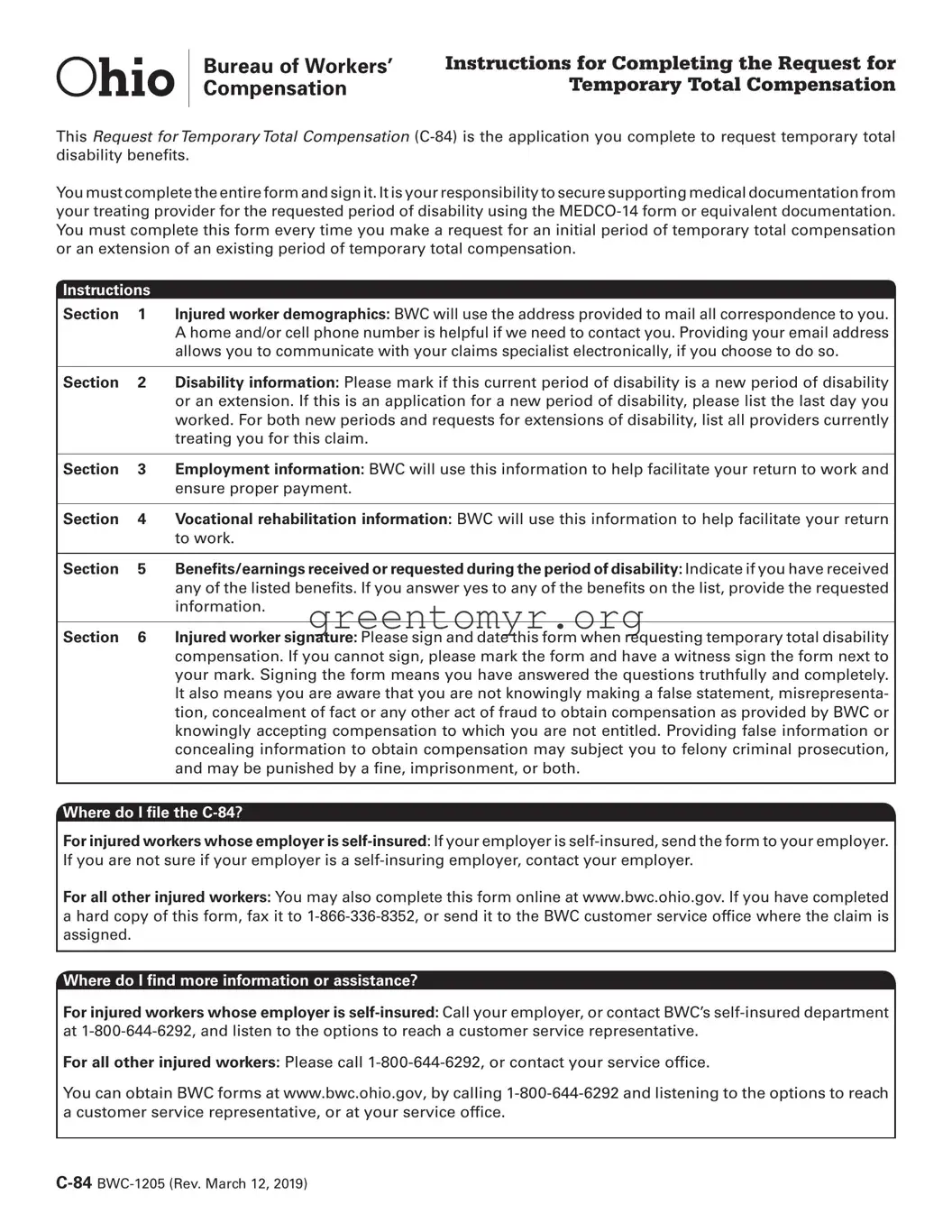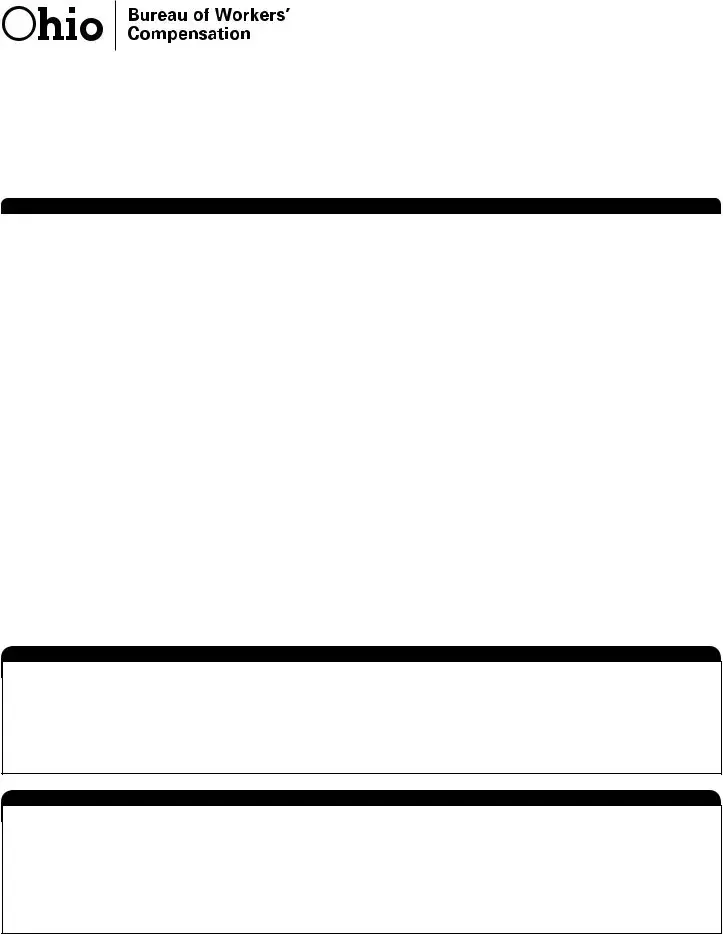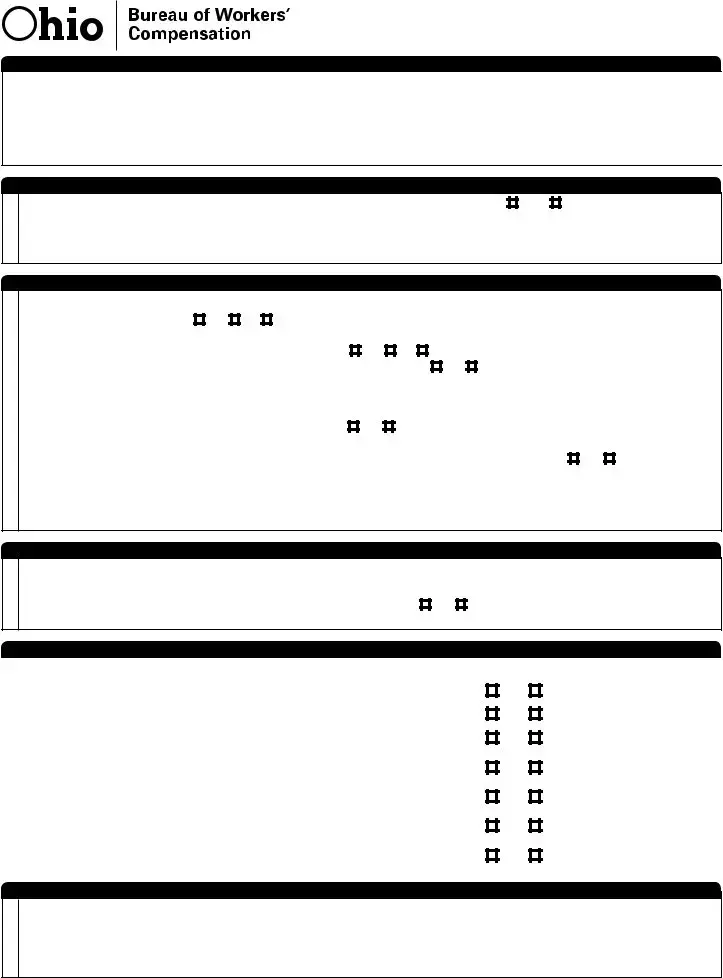What was your occupation at the time of the injury/disease? _________________________________________________________________________
•Do you have a job to return to? n Yes n No n I don’t know
o If yes, who is your employer? __________________________________________________________________________________________________
o If yes, does your employer offer modified (light-duty) work? n Yes n No n I don’t know o If yes, do you feel capable of performing any of your job duties at this time? n Yes n No
If yes, what duties? ___________________________________________________________________________________________________________
Working includes full or part-time, self-employment, income-producing hobbies, commission work, or unpaid activities that are not minimal and directly earn income for someone else.
•Are you currently working in any capacity (as defined above)? n Yes n No
o If yes, who is your employer? __________________________________________________________________________________________________
•Have you previously worked in any capacity (as defined above) during this requested period of disability? n Yes n No
o If yes, who is your employer? __________________________________________________________________________________________________
o If no, when was the last date you worked anywhere? _____________________/ / Reason for leaving ____________________________________
•What do you feel is preventing you from returning to work at this time? Please describe physical, employment and personal barriers.
________________________________________________________________________________________________________________________________


